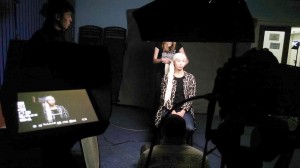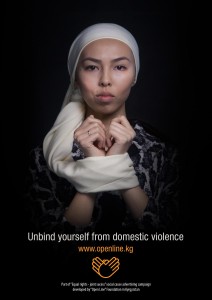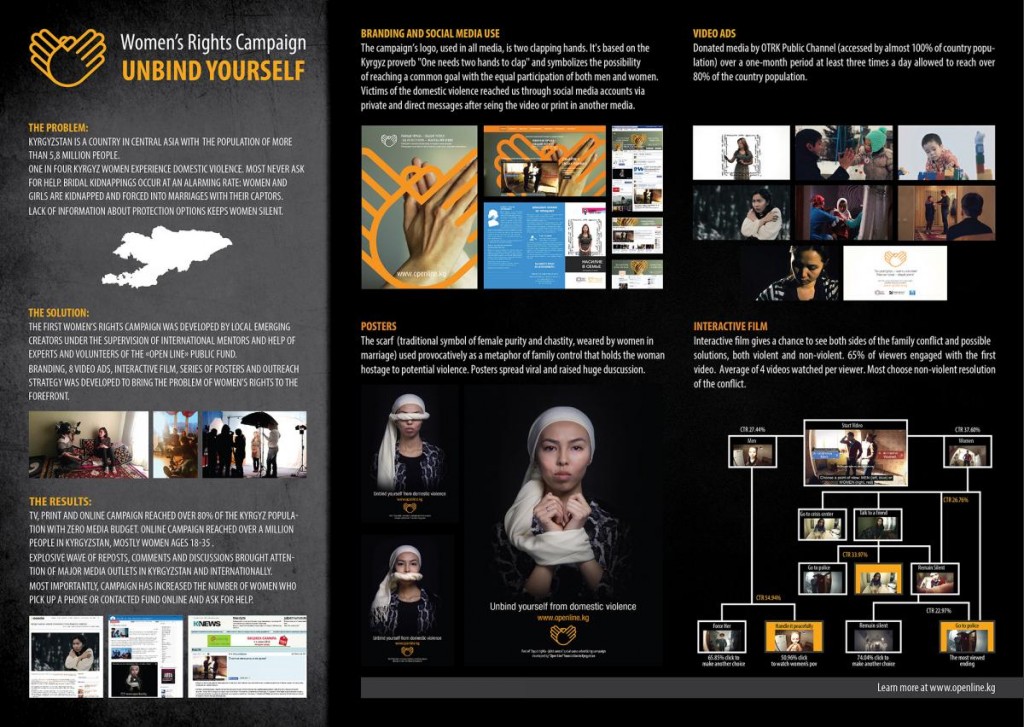Georgiy Molodtsov, a Fulbright scholar in the MA program at American University, was this year’s winner of the “Media That Matters” award for his work on “Unbind Yourself”. The project was recently presented at Cannes Lions, the biggest advertising festival in the world.
This interview has been edited and condensed.
Tell us about your project “Unbind Yourself”. How did it get started?
My non-profit organization “Social Advertising Laboratory” has been working for more than 10 years on social cause advertising campaigns. We are based in Russia and recently started a series of workshops where we work with local organizations to educate emerging creators about social cause advertising for local needs. Over the course of 5-6 days, groups of local creators develop and produce advertising campaigns based on the social problem of the selected non-profit. We usually get support from local tv-stations and other media, as well as equipment and resources from local production companies.
In this case, I was invited to Kyrgyzstan to conduct a workshop for OPEN Line Public Foundation, which has been working on women’s rights, specifically protection against domestic violence and bride kidnapping, for more than six years. In 2012, we did training on the subject of bride kidnapping, and the videos were so successful that the women’s rights community and Open Line pushed the government to change legislation against violators. In 2015, we decided to continue and expand our work to concentrate on three issues: women’s equality, domestic violence and bride kidnapping.
In January 2015, I travelled to Kyrgyzstan, where we worked with 16-18 local emerging creators. The first three days we worked on the creative part – brainstorming, ideas, storyboards and presentations. Over the following three days, we created 8 videos, a series of posters, an interactive film, as well as the campaign branding.
It took me an additional month to finish post-production and develop the outreach strategy. We were ultimately really happy with what we did, as it was the first campaign of such a scale that combined traditional and new media in Kyrgyzstan.
How was this campaign distributed?
I built the outreach strategy in three ways. We started with a trailer of the campaign and the ideos on women’s equality, which were immediately picked up by major media. These videos were really positive and non-controversial, so the media was very willing to post it. At the same time, the First National Women’s Forum took place in Kyrgyzstan and our videos (the first of their kind) were in focus there, so additional coverage came through the forum.
The second wave against domestic violence included my “Unbind Yourself” posters, an interactive film against domestic violence and a few more video ads. They were much more controversial, but because media coverage of the first wave was so huge, most of the audience was reached with the second wave as well.
The third wave was about bride kidnapping and received an even bigger social media response than the 2012 campaign.
What kind of engagement is your project having?
The reach of the products was incredible: OTRK TV Channel provided us with donated media at least 3 times a day over a month-long period, which brought us coverage to around 80% of Kyrgyz population (total population is around 6 million people). Our Facebook, Twitter and Youtube accounts reached over 1.5 million people all over the world and gained attention from both Kyrgyz and international media. The campaign’s landing page, which we developed to provide information about crisis centers and bride kidnapping prevention, was really popular and helped to promote the OPEN LINE website.
But, most importantly, OPEN Line helped at least 3 victims of domestic violence and 2 victims of bride kidnapping during the initial campaign. The campaign was relaunched again in the fall, and this outreach helped us to understand that people need these kind of messages and that our work saved someone’s life.
Our idea was to not only create the campaign, but to educate emerging creators from Kyrgyzstan on how to create this kind of media and build a network between non-profits, creators, television channels and other media. We did this so that after I leave, these creators could continue to make this kind of media. And that’s what I see happening now.

On the set of “Unbind Yourself”. A traditional symbol (the white scarf) is used in a provocative way to raise awareness about women’s rights, domestic violence and bride kidnapping.
Can you tell us about the visual elements of the campaign?
A white scarf is a symbol of purity and innocence that reflects the marital status of women. And I thought that if we are dealing with the violation of women’s rights, we can creatively and provocatively change the meaning of this traditional image to show that this scarf is limiting women’s freedom. We’ve been able to raise awareness and facilitate discussions, mostly started by women who have suffered from these injustices.
The second image is the logo of the campaign – two clapping hands with the small heart in the middle, which was created by local art director Dilshad Matkulov. The idea comes from the local traditional proverb that “One needs two hands to clap”. For me it was a perfect symbol of what equality is – that the best results will come if both men and women equally participate.
What’s next for you as a filmmaker?
I’ve become interested in 360 degree videos and I see huge potential in social cause advertising and creative filmmaking. I am also on the selection committee of the Moscow International Film Festival in Russia, as well as the VP of the Russian Documentary Guild. I’m really grateful to the Fulbright Program for giving me an opportunity to receive a Master’s Degree from a really prestigious film school in the United States, and I really hope that the knowledge and skills I gain will be used for good in Russia


